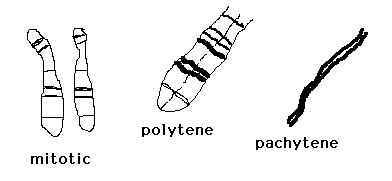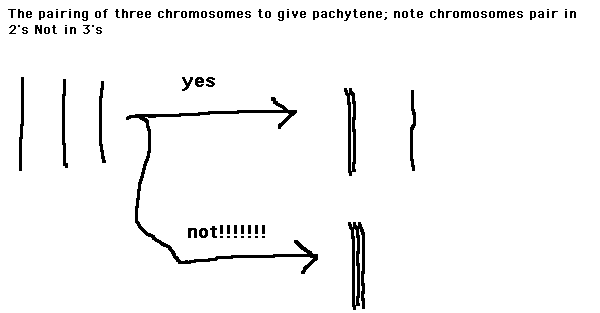Help for working with the mutation chart.
You must know the difference between the three kinds of chromosomes: mitotic,
pachytene, and polytene.
mitotic chromosomes are derived from cells in culture. These cells
are generally treated with colchicine or a colchicine like material which
will shorten the chromosomes. The cells are then fixed (killed and
preserved) with acetic alchohol and air dried on to microscope slides. The
slides are then treated to bring out bands and then stained. Photographs
of good spreads of chromosomes are then taken and prints made. Pictures
of the chromosomes are then cut out and placed in a specific order on a sheet
of paper. This is the karyotype. Homologous chromosomes are
glued close together and the pairs of chromosomes ordered by size.
Here are two forms of a karyotype:

The chromosomes are not naturally paired; they are cut outs glued close
together. You may not be able to see the chromatids
of each replicated chromosome.
Polytene chromosomes are very long and wide and the homologous chromosomes
are naturally tightly paired. We like to examine
polytene chromosomes because they are very tightly paired and are naturally
banded. Differences between the homologues will show
up as a specific pattern.

Pachytene chromosomes are much smaller than polytenes but do have pairing
of homologous chromosomes. They are not banded.
Differences between the homologous chromosomes will generally show up as
a specific pattern.

You must be able to make drawings of each of the three kinds of chromosomes.

You must be able to match up numbers and letters on two lines. If
you have difficulty with this you might
try doing it with clay.

Chromosomes pair in two's during meiosis





